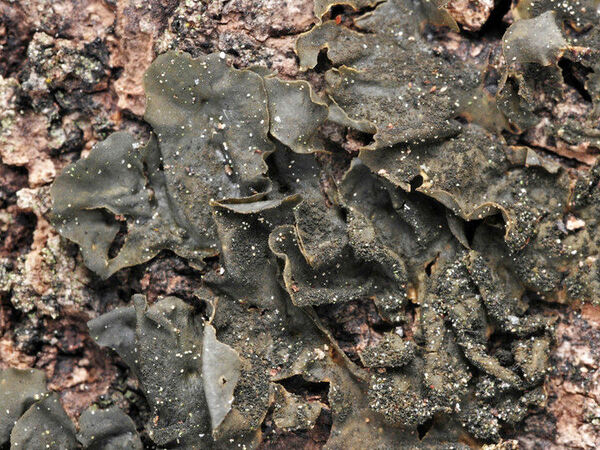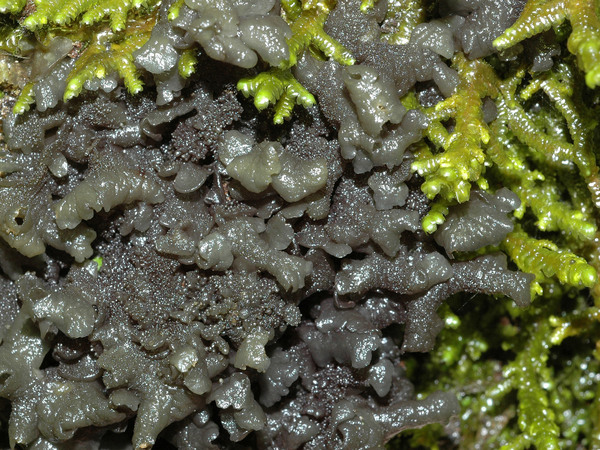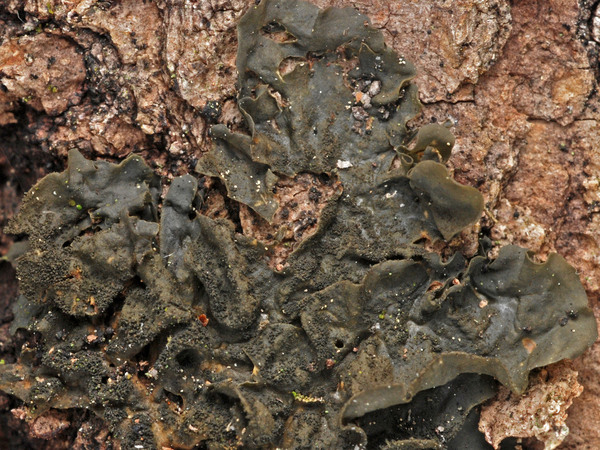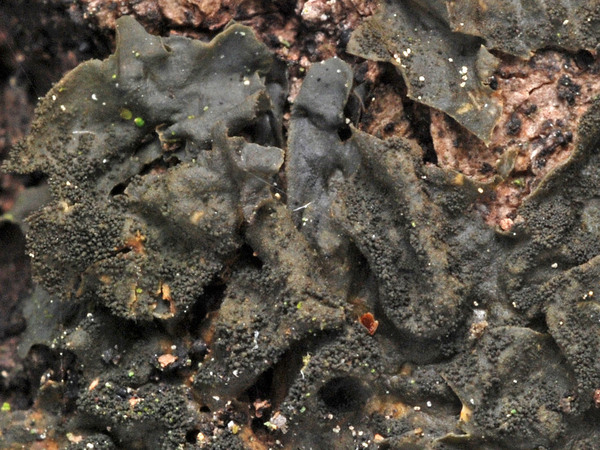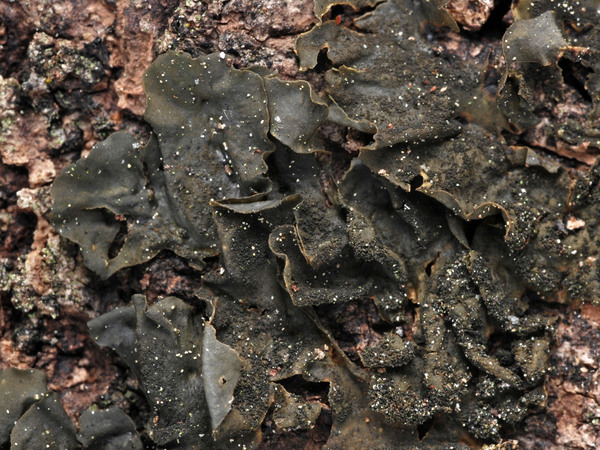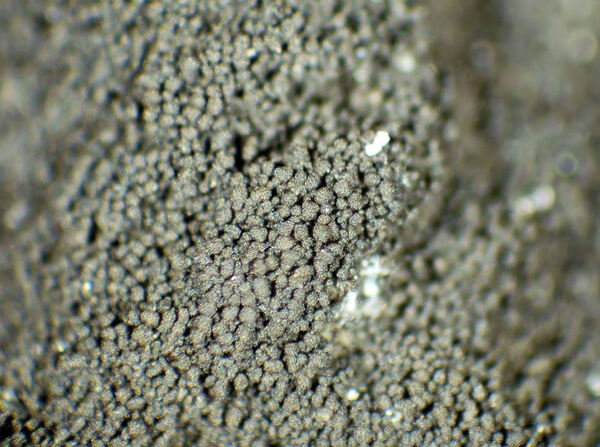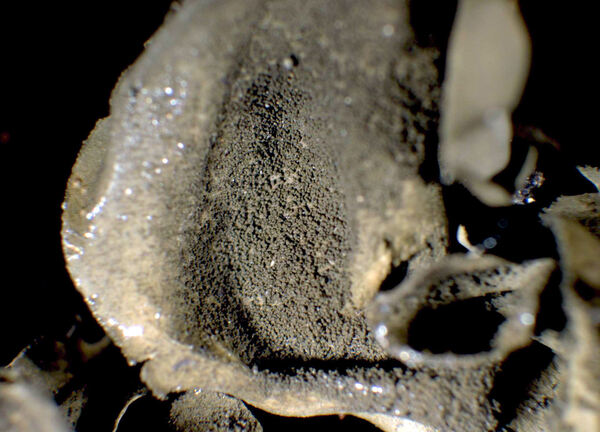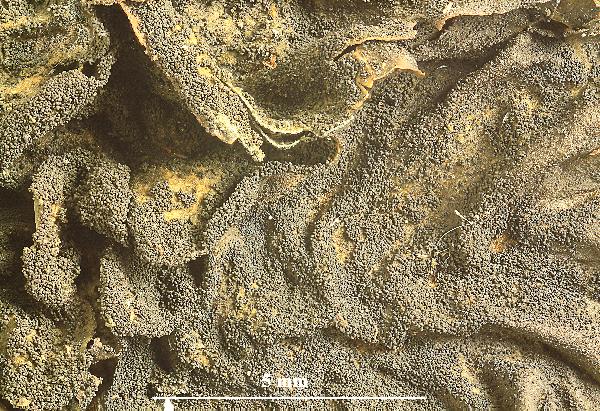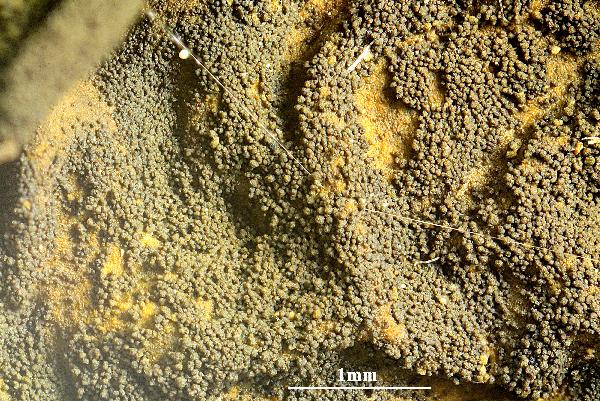Collema subflaccidum Degel.
Symb. Bot. Upsal., 20, 2: 140, 1974.
Synonyms: Collema subfurvum auct.
Distribution: N - VG (Castello 1996, Carvalho 1997, Castello & Skert 2005), Frl (Tretiach & Molaro 2007), Ven (Thor & Nascimbene 2007, Nascimbene 2008), TAA (Nimis & al. 2015), Lomb (Zocchi & al. 1997, Arosio & al. 2003, Gheza 2019), Piem (Isocrono & al. 2004, 2005b, Isocrono & Piervittori 2008), Emil (Benesperi 2009, Fariselli & al. 2020), Lig (Brunialti & Giordani 2003, Giordani & Incerti 2008). C - Tosc (Tretiach & Nimis 1994, Loppi & Putortì 1995, 1995b, Loppi & al. 1995, 1997, 1998, 1998b, 2002c, Loppi 1996, Loppi & De Dominicis 1996, Loppi & Nascimbene 1998, 2010, Putortì & al. 1998, 1999, Putortì & Loppi 1999b, Benesperi 2000a, 2006, 2011, Loppi & Pirintsos 2000, Frati & al. 2006b, Loppi & Frati 2006, Benesperi & al. 2007, Lastrucci & al. 2009, Paoli & Loppi 2001, Brunialti & Frati 2010, Paoli & al. 2012, 2015d), Marc (Nimis & Tretiach 1999, Frati & Brunialti 2006), Umb (Ravera 1998, Ravera & al. 2006), Laz (Massari & Ravera 2002, Ravera & Genovesi 2008), Abr (Recchia & al. 1993, Olivieri & Pacioni 1996, Olivieri & al. 1997, 1997b, Loppi & al. 1999, Nimis & Tretiach 1999, Gheza & al. 2021), Mol (Nimis & Tretiach 1999, Caporale & al. 2008, Paoli & al. 2011, 2015), Sar (Zedda 2002, Rizzi & al. 2011, Cossu 2013, Di Nuzzo & al. 2022). S - Camp (Aprile & al. 2003b, Nimis & Tretiach 2004, Garofalo & al. 2010, Blasi & al. 2010, Brunialti & al. 2013, Ravera & Brunialti 2013, Catalano & al. 2016), Pugl (Nimis & Tretiach 1999), Bas (Potenza 2006), Cal (Puntillo 1996, Incerti & Nimis 2006), Si (Nimis & al. 1996b, Merlo 2004, Campisi & al. 2020).
Description: Thallus foliose, homoiomerous, subgelatinous when wet, dark olive-green to almost black, dull, rather loosely attached, 3-6 cm wide. Lobes 0.5-1(-2) cm wide, thin when dry, 75-120 µm thick when wet, not swollen nor pustulate, more or less rotund at apex, often ascending. Upper surface with numerous simple, globose to rarely in part teretiform, c. 0.05-0.1 mm wide isidioid outgrowths. Lower surface usually somewhat paler than the upper surface, with scattered white hapters. Upper and lower cortex absent. Apothecia rare, lecanorine, laminal, constricted at base, 1.5(-2.5) mm across, with a reddish brown disc and a smooth but often pseudoidiate thalline margin. Thalline exciple thickly pseudocorticate; proper exciple rather thin, subpara- to euthyplectenchymatous; epithecium brownish; hymenium colourless, 90-130 µm high; paraphyses simple or sparingly branched, 2(-4) µm thick at mid-level, with clavate to subglobose tips; hypothecium colourless. Asci 8-spored, cylindrical-clavate, the apex strongly thickened, the apical dome K/I+ pale blue, with a downwardly projecting K/I+ deep blue tubular structure. Ascospores (3-)5-7-septate, hyaline, narrowly fusiform to broadly acicular, 40-55(-65) x (3-)5-7 µm. Pycnidia rare, immersed, laminal, pale brown. Conidia bacilliform or with slightly swollen ends, (3-)4-4.5(-6) x 1-1.5(-1.8) µm. Photobiont cyanobacterial (Nostoc, the cells in long chains). Spot tests: all negative. Chemistry: without lichen substances.Note: a mainly temperate, incompletely holarctic species found on more or less isolated broad-leaved trees in humid-rainy areas, mostly below the subalpine belt; more common in the past, presently absent from heavily disturbed habitats and most frequent in Tyrrhenian and northeastern Italy.
Growth form: Foliose, broad lobed
Substrata: bark
Photobiont: cyanobacteria, filamentous (e.g. Nostoc, Scytonema)
Reproductive strategy: mainly asexual, by isidia, or isidia-like structures (e.g. schizidia)
Most common in areas with a humid-warm climate (e.g. most of Tyrrenian Italy)
Commonnes-rarity: (info)
Alpine belt: absent
Subalpine belt: absent
Oromediterranean belt: absent
Montane belt: rare
Submediterranean belt: very rare
Padanian area: extremely rare
Humid submediterranean belt: rather common
Humid mediterranean belt: rather rare
Dry mediterranean belt: extremely rare
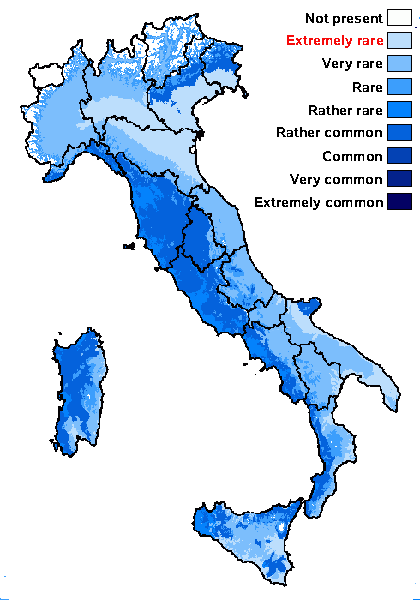
Predictive model
Herbarium samples
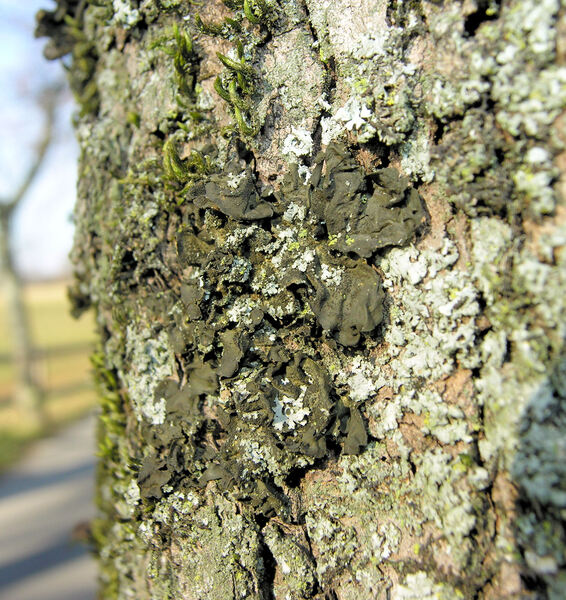

Andrea Moro; Owner: Department of Life Sciences, University of Trieste
Slovenia, Lipica/Lipizza; altitude: 2
2008.02.21
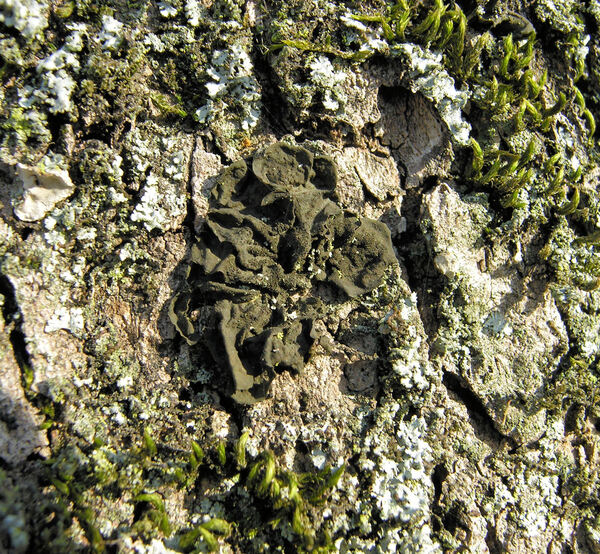

Andrea Moro; Owner: Department of Life Sciences, University of Trieste
Slovenia, Lipica/Lipizza; altitude: 2
2008.02.21
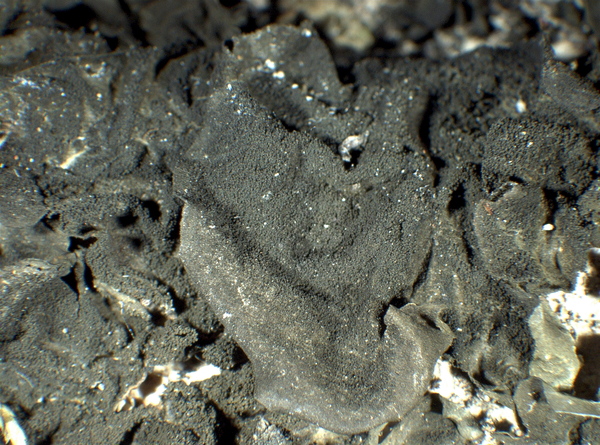

P.L.Nimis; Owner: Department of Life Sciences, University of Trieste
Herbarium: TSB (24137)
2008.03.06
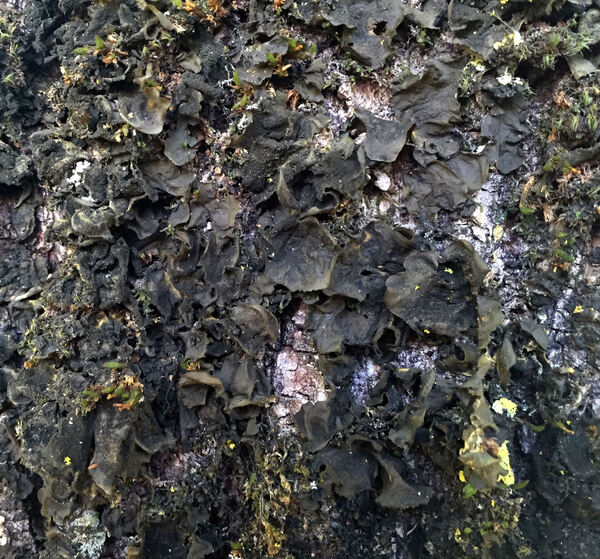

P.L. Nimis; Owner: Department of Life Sciences, University of Trieste
Italy, Friuli Venezia Giulia, Udine, Ampezzo Carnico, 600 m
09.09.2016
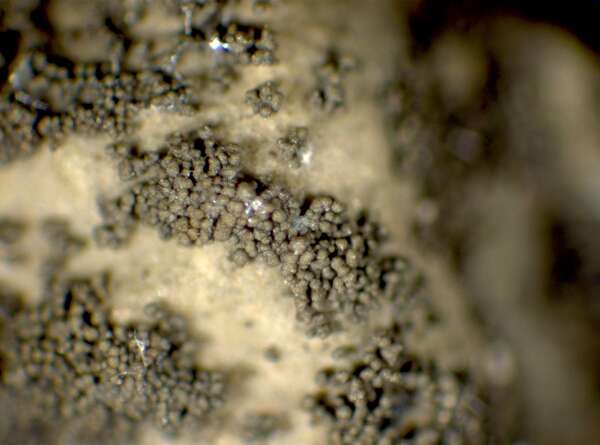

P.L. Nimis; Owner: Department of Life Sciences, University of Trieste
Herbarium: TSB (12683)
2001/12/04
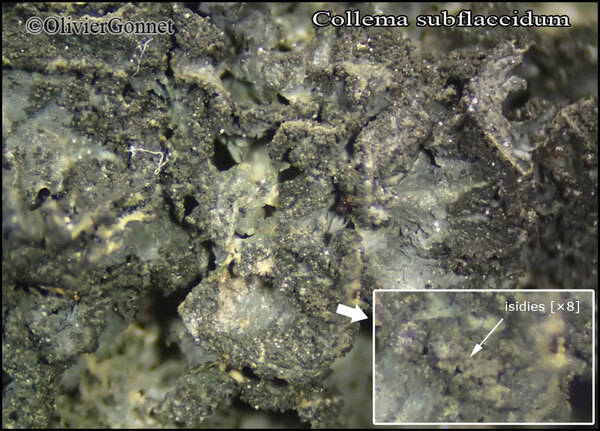
Courtesy Danièle et Olivier Gonnet - Source: https://www.afl-lichenologie.fr/Photos_AFL/Photos_AFL_C/Textes_C6/Collema_subflaccidum.htm; Owner: -
France, Corse - (20) - Site archéologique de Cucuruzzu, alt. 730m - sur Quercus ilex
25/10/2016
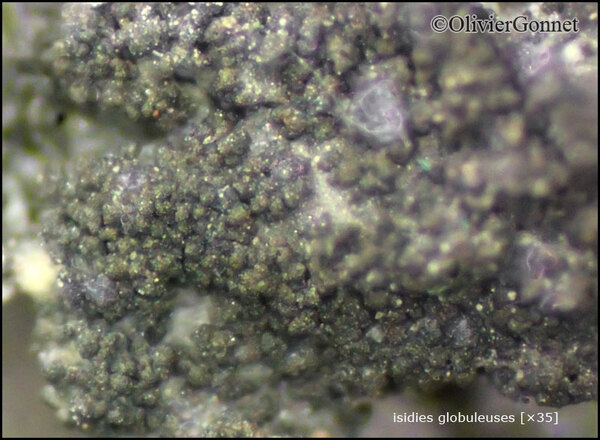
Courtesy Danièle et Olivier Gonnet - Source: https://www.afl-lichenologie.fr/Photos_AFL/Photos_AFL_C/Textes_C6/Collema_subflaccidum.htm; Owner: -
France, Corse - (20) - Site archéologique de Cucuruzzu, alt. 730m - sur Quercus ilex
25/10/2016
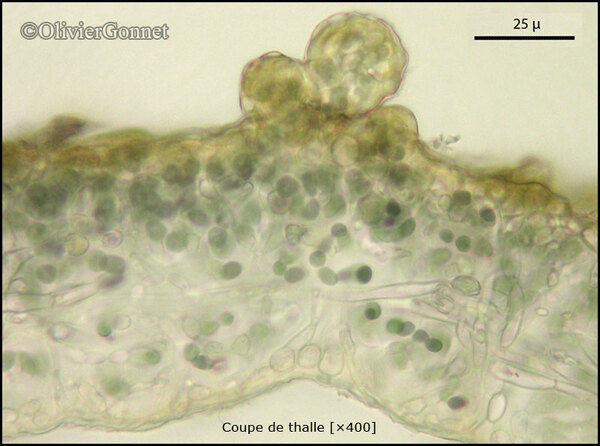
Courtesy Danièle et Olivier Gonnet - Source: https://www.afl-lichenologie.fr/Photos_AFL/Photos_AFL_C/Textes_C6/Collema_subflaccidum.htm; Owner: -
France, Corse - (20) - Site archéologique de Cucuruzzu, alt. 730m - sur Quercus ilex
25/10/2016
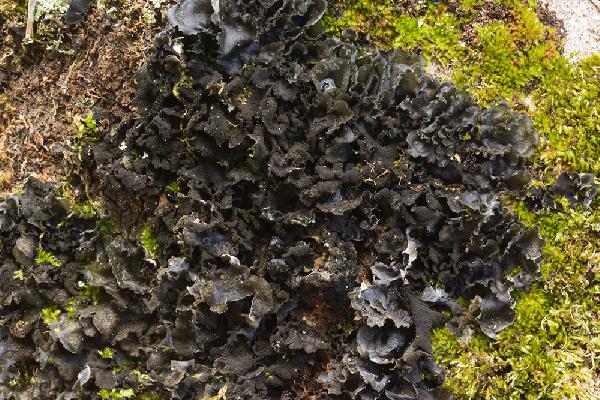
Marta Gonzalez Garcia - Centro de Estudios Micologicos Asturianos
Spain, La Focella (Teverga-Asturias), 17-X-2021, en corteza de Fagus sylvatica, leg. & det. Marta González, ERD-9117.
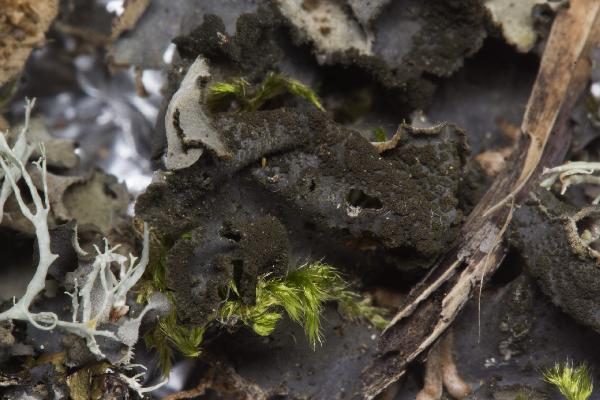
Marta Gonzalez Garcia - Centro de Estudios Micologicos Asturianos
Spain, La Focella (Teverga-Asturias), 17-X-2021, en corteza de Fagus sylvatica, leg. & det. Marta González, ERD-9117.
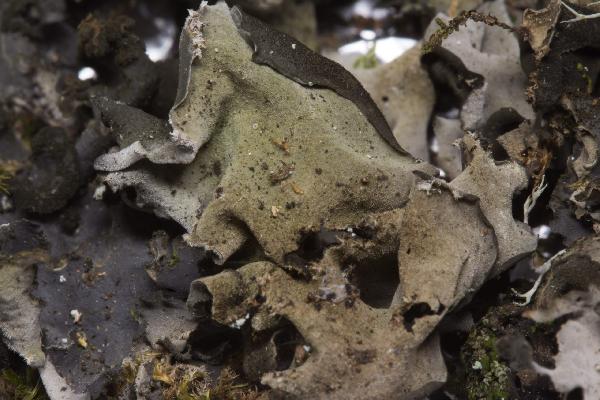
Marta Gonzalez Garcia - Centro de Estudios Micologicos Asturianos
Spain, La Focella (Teverga-Asturias), 17-X-2021, en corteza de Fagus sylvatica, leg. & det. Marta González, ERD-9117.
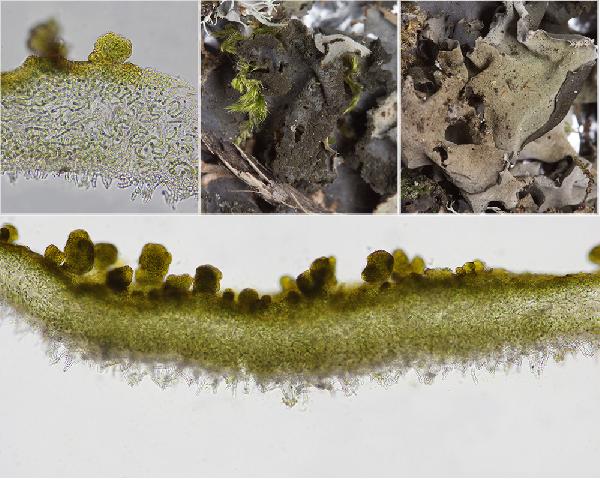
Marta Gonzalez Garcia - Centro de Estudios Micologicos Asturianos
Spain, La Focella (Teverga-Asturias), 17-X-2021, en corteza de Fagus sylvatica, leg. & det. Marta González, ERD-9117.
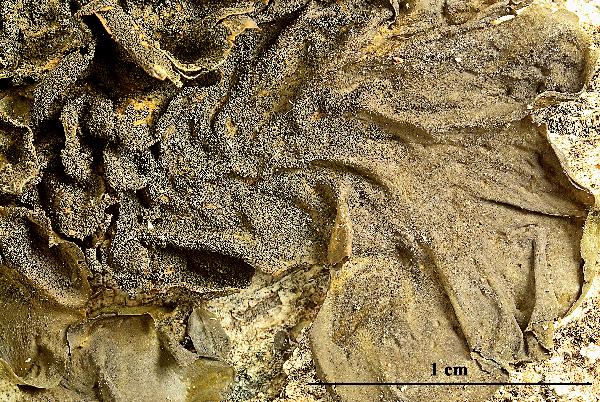

Felix Schumm - CC BY-SA 4.0
[OH606], Japan, Hokkaido, Prov. Kitami: Utanoboripenkenai, Esashicho,
Esashi-gun (44°47'121'' N, 142°31'08''). On trunc of Ulmus davidiana
var. japonica, 100m. Leg. Y Ohmura (no.11183), 20.06.2016,
det. Y. Ohmura. - EX Y. OHMURA: LICHENES MINUS COGNITI EXSICCATI
NR. 606.
Growth form: Foliose, broad lobed
Substrata: bark
Photobiont: cyanobacteria, filamentous (e.g. Nostoc, Scytonema)
Reproductive strategy: mainly asexual, by isidia, or isidia-like structures (e.g. schizidia)
Most common in areas with a humid-warm climate (e.g. most of Tyrrenian Italy)
Commonnes-rarity: (info)
Alpine belt: absent
Subalpine belt: absent
Oromediterranean belt: absent
Montane belt: rare
Submediterranean belt: very rare
Padanian area: extremely rare
Humid submediterranean belt: rather common
Humid mediterranean belt: rather rare
Dry mediterranean belt: extremely rare

Predictive model
| Herbarium samples |


Andrea Moro; Owner: Department of Life Sciences, University of Trieste
Slovenia, Lipica/Lipizza; altitude: 2
2008.02.21


Andrea Moro; Owner: Department of Life Sciences, University of Trieste
Slovenia, Lipica/Lipizza; altitude: 2
2008.02.21


P.L.Nimis; Owner: Department of Life Sciences, University of Trieste
Herbarium: TSB (24137)
2008.03.06


P.L. Nimis; Owner: Department of Life Sciences, University of Trieste
Italy, Friuli Venezia Giulia, Udine, Ampezzo Carnico, 600 m
09.09.2016


P.L. Nimis; Owner: Department of Life Sciences, University of Trieste
Herbarium: TSB (12683)
2001/12/04

Courtesy Danièle et Olivier Gonnet - Source: https://www.afl-lichenologie.fr/Photos_AFL/Photos_AFL_C/Textes_C6/Collema_subflaccidum.htm; Owner: -
France, Corse - (20) - Site archéologique de Cucuruzzu, alt. 730m - sur Quercus ilex
25/10/2016

Courtesy Danièle et Olivier Gonnet - Source: https://www.afl-lichenologie.fr/Photos_AFL/Photos_AFL_C/Textes_C6/Collema_subflaccidum.htm; Owner: -
France, Corse - (20) - Site archéologique de Cucuruzzu, alt. 730m - sur Quercus ilex
25/10/2016

Courtesy Danièle et Olivier Gonnet - Source: https://www.afl-lichenologie.fr/Photos_AFL/Photos_AFL_C/Textes_C6/Collema_subflaccidum.htm; Owner: -
France, Corse - (20) - Site archéologique de Cucuruzzu, alt. 730m - sur Quercus ilex
25/10/2016

Marta Gonzalez Garcia - Centro de Estudios Micologicos Asturianos
Spain, La Focella (Teverga-Asturias), 17-X-2021, en corteza de Fagus sylvatica, leg. & det. Marta González, ERD-9117.

Marta Gonzalez Garcia - Centro de Estudios Micologicos Asturianos
Spain, La Focella (Teverga-Asturias), 17-X-2021, en corteza de Fagus sylvatica, leg. & det. Marta González, ERD-9117.

Marta Gonzalez Garcia - Centro de Estudios Micologicos Asturianos
Spain, La Focella (Teverga-Asturias), 17-X-2021, en corteza de Fagus sylvatica, leg. & det. Marta González, ERD-9117.

Marta Gonzalez Garcia - Centro de Estudios Micologicos Asturianos
Spain, La Focella (Teverga-Asturias), 17-X-2021, en corteza de Fagus sylvatica, leg. & det. Marta González, ERD-9117.


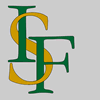 Index Fungorum
Index Fungorum
 GBIF
GBIF
